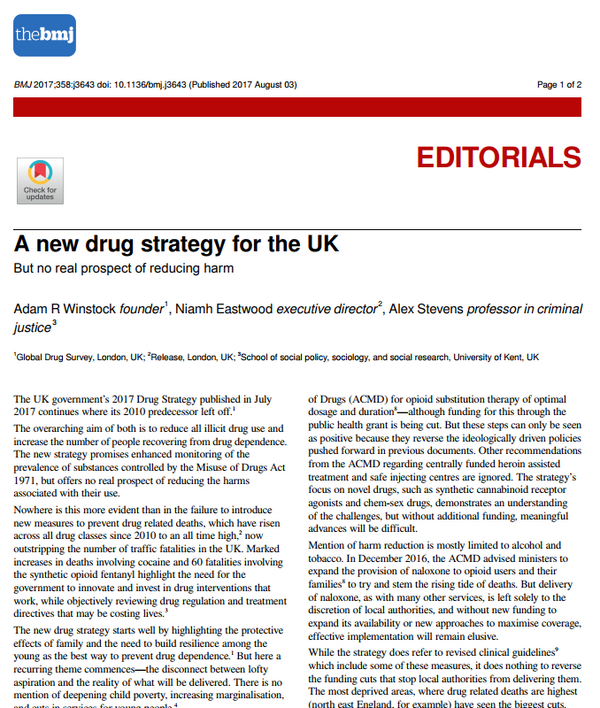Una nueva estrategia de drogas para el Reino Unido
Winstock, Eastwood y Stevens desgranan cómo la nueva estrategia de drogas del Reino Unido, casi desprovista de iniciativas de reducción de daños, no logrará reducir el creciente número de muertes relacionadas con sustancias. Más información, en inglés, está disponible abajo.
Suscríbase a las Alertas mensuales del IDPC para recibir información sobre cuestiones relacionadas con políticas sobre drogas.
The UK government’s 2017 Drug Strategy published in July 2017 continues where its 2010 predecessor left off.1
The overarching aim of both is to reduce all illicit drug use and increase the number of people recovering from drug dependence. The new strategy promises enhanced monitoring of the prevalence of substances controlled by the Misuse of Drugs Act 1971, but offers no real prospect of reducing the harms associated with their use.
Nowhere is this more evident than in the failure to introduce new measures to prevent drug related deaths, which have risen across all drug classes since 2010 to an all time high,2 now outstripping the number of traffic fatalities in the UK. Marked increases in deaths involving cocaine and 60 fatalities involving the synthetic opioid fentanyl highlight the need for the government to innovate and invest in drug interventions that work, while objectively reviewing drug regulation and treatment directives that may be costing lives.3
Click here for the full article (behind paywall)
Keep up-to-date with drug policy developments by subscribing to the IDPC Monthly Alert.
